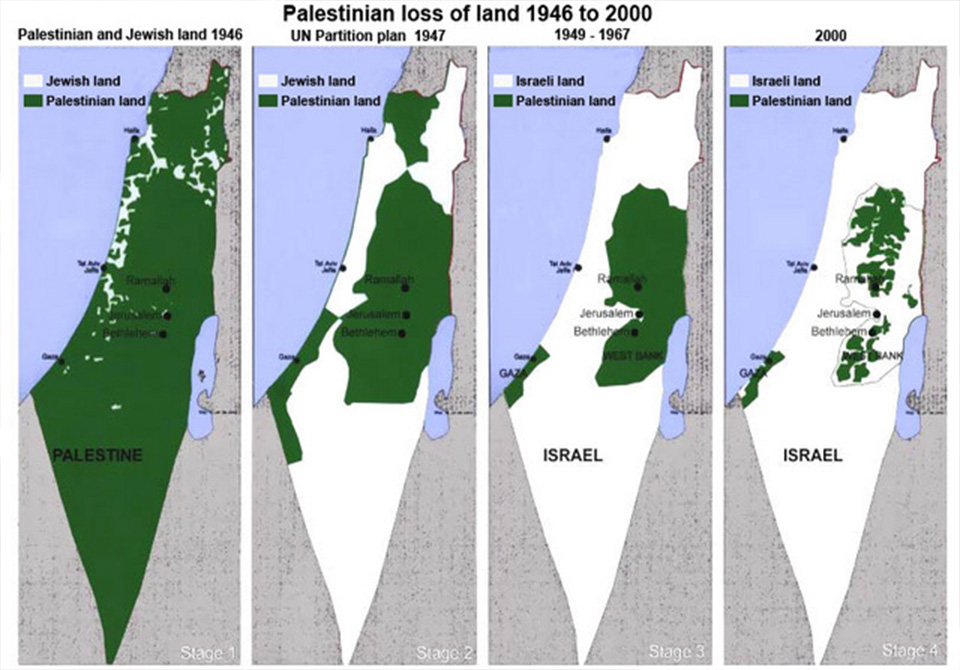Geography
Land: Coastal lowlands of varying widths front the Mediterranean. The most northerly is the Plain of Akko (Acre), which extends with a breadth of 5 to 9 miles (8 to 14 km) for about 20 miles (32 km) from the Lebanon border in the north to the Carmel promontory, in Israel, in the south, where it narrows to a mere 600 feet (180 metres).
Farther southward the lowland opens out rapidly into the Plain of Sharon, about 8 miles (13 km) wide and extending south to the latitude of Tel Aviv–Yafo. Once covered with marshes, the Sharon plain was reclaimed in the post-Exilic and Hellenistic period and is now a settled area. Fields and fruit groves are laid out between scattered sandstone ridges, on which villages have grown up. South of the spur of low hills that approaches the coast at about Yafo (Jaffa), the plain widens into a fertile region known in biblical times as Philistia, a district of orange groves, irrigated orchards, and fields of grain.
Farther northward the Plain of Esdraelon (Emeq Yizreel), formed by subsidence along lines of faults, separates the hills of southern Galilee from the mountains of Samaria. The plain, 16 miles (26 km) wide at most, narrows to the northwest, where the Qishon River breaks through to the Plain of Akko, and to the southeast, where the Harod River—which rises at the Spring of Harod—has carved the plain into the side of the Jordan Valley. Covered with rich basaltic soils washed down from the Galilean hills, Esdraelon is important both for its fertility and for the great highway it opens from the Mediterranean to the lands across the Jordan. The maritime plain connects with Esdraelon by the pass of Megiddo and several lesser routes between the mountain spurs of Carmel and Gilboa.

The hill country of Galilee is better-watered and more thickly wooded than that of Samaria or Judaea. North of the Bet Netofa Valley (Plain of Asochis) is Upper Galilee, with elevations of 4,000 feet (1,200 metres), a scrub-covered limestone plateau that is thinly populated. To the south, Lower Galilee—with its highest peak, Mount Tabor (1,929 feet [588 metres])—is a land of east-west ridges enclosing sheltered vales like that of Nazareth, with rich basaltic soils.
Samaria, the region of the ancient kingdom of Israel, is a hilly district extending from the Plain of Esdraelon to the latitude of Ramallah. Its mountains—Carmel, Gilboa, Aybal (Ebal), and Al-Tur (Gerizim)—are lower than those of Upper Galilee, while its basins, notably those of the Arrabah Plain and N?blus, are wider and more gently contoured than their equivalents in Judaea. Samaria is easily approached from the coast across the Plain of Sharon and from the Jordan by the F?ri?ah valley. The city of Jerusalem has expanded rapidly along the mountain ridges.
From Ramallah in the north to Beersheba in the south, the high plateau of Judaea is a rocky wilderness of limestone, with rare patches of cultivation, as found around Al-Birah and Hebron. It is separated from the coastal plain by a longitudinal fosse and a belt of low hills of soft chalky limestone, about 5 to 8 miles (8 to 13 km) wide, known as Ha-Shefela. The Judaean plateau falls abruptly to the Jordan Valley, which is approached with difficulty along the wadis Kelt and Mukallik.
The Jordan Valley is a deep rift valley that varies in width from 1.5 to 14 miles (2.5 to 22 km). In its northern section the bed of the drained Lake ?ula and of Lake Tiberias (the Sea of Galilee) are blocked by natural dams of basalt. Descending to about 1,310 feet (400 metres) below sea level—the lowest land depth on the Earth’s surface—the valley is exceedingly dry and hot, and cultivation is restricted to irrigated areas or rare oases, as at Jericho or at En Gedi by the shore of the Dead Sea.
The Negev, a desertlike region, is triangular in shape with the apex at the south. It extends from Beersheba in the north, where 8 inches (200 mm) or more of precipitation falls annually and grain is grown, to the port city of Elaton the Red Sea, in the extremely arid south. It is bounded by the Sinai Peninsula on the west and the northern extension of the Great Rift Valley on the east.
